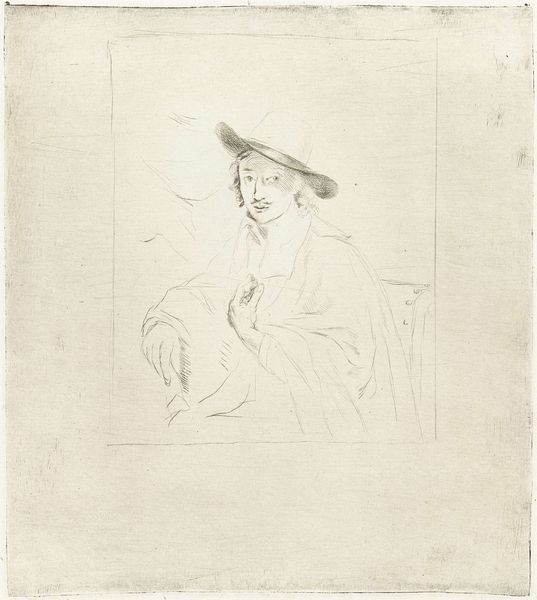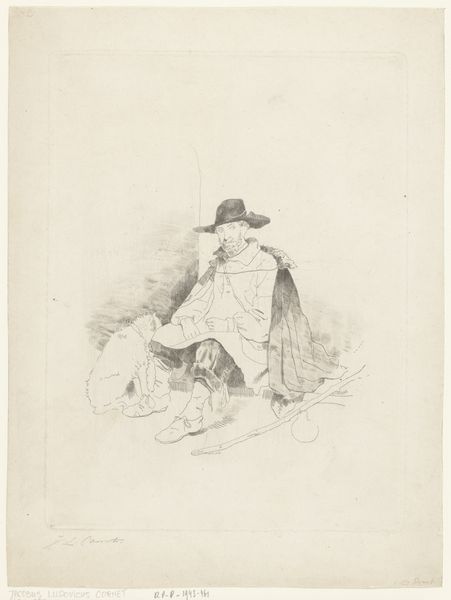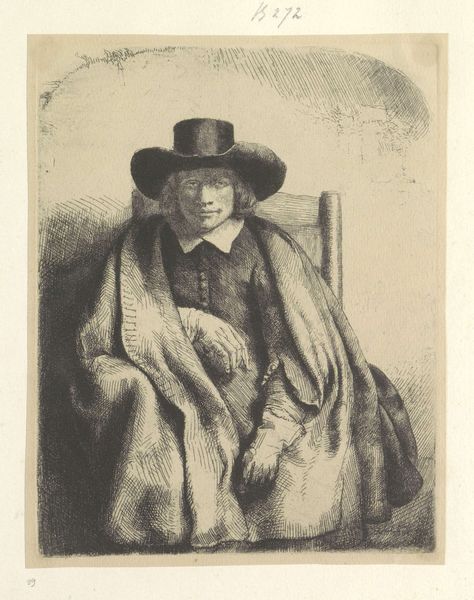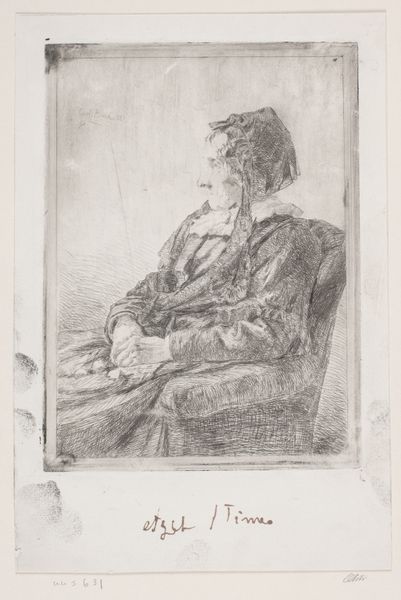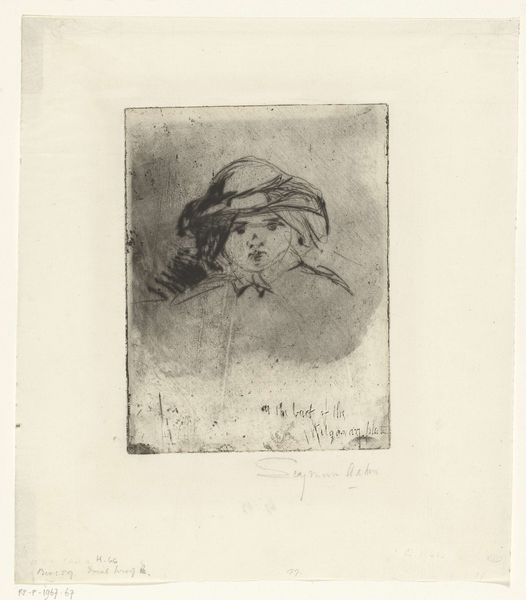
Dimensions: height 193 mm, width 172 mm
Copyright: Rijks Museum: Open Domain
Curator: What immediately strikes me is the deliberate lack of refinement; there's an almost rushed, sketch-like quality to this etching. Editor: This etching, crafted by Louis Bernard Coclers sometime between 1756 and 1817, is titled "Portret van de schilder Adriaen van Ostade," or "Portrait of the painter Adriaen van Ostade." It presents us with a compelling study in line and shadow, and I agree; the materiality seems to speak of immediacy and perhaps even a commentary on the commercial pressures impacting artists. Curator: Precisely. Considering Coclers’ practice, the use of etching rather than engraving is key. Etching allows for a looser line, a more immediate expression than the painstaking work of an engraving, which could indicate quicker, more accessible modes of production in that era, perhaps to meet an increase in demand for artist portraits. Editor: And it presents van Ostade, also a Dutch Golden Age artist, within a fascinating historical framework. His paintings often depicted everyday life, reflecting the concerns and pleasures of the common person. By the time Coclers created this portrait, van Ostade’s reputation would have solidified within art history. Think of how institutions shape artistic legacy: the markets, salons, and critical reception of his work... these all constructed and continue to uphold his image. Curator: Yes, it's interesting to see a print, made with materials readily reproducible, cementing the status of painting, historically valued as "high art". Etchings allowed for dissemination. The artist as a brand, consumable beyond the canvas, that’s a relatively novel concept here, facilitated by these techniques. We're really seeing art and labor intersect, the mechanization influencing artistry. Editor: The shadowy backdrop is also quite potent. Consider its placement— a theatrical display emphasizing his presence while shrouding aspects of his identity. Van Ostade’s legacy is partly defined by these constructed notions; they inform how subsequent generations perceive him, how museums contextualize his role in art history. Curator: I concur. From a maker's standpoint, it represents the subtle, yet powerful effect the printing press and new reproduction technology exerted on art's trajectory. Editor: I'm left wondering, beyond its material context, what societal factors prompted Coclers to immortalize Van Ostade in this specific manner, perpetuating a selected historical narrative. Curator: An insightful viewpoint. We can perceive Coclers’ own ambition mirrored in that of Van Ostade: it is intriguing, what we consume says much of us. Editor: Indeed. Viewing the print raises interesting issues about art production and influence through a carefully crafted, repeatable image.
Comments
No comments
Be the first to comment and join the conversation on the ultimate creative platform.


